Proper gait mechanics are essential for active people who want to walk and run without pain or injury. A 3D gait analysis and retraining program can dramatically improve your speed and overall performance while reducing your risk of injury.
or
Walking and running are natural human movements, and gait is their underlying mechanism. Every human has unique gait characteristics determined by a number of factors, including muscle activation patterns, ground reaction forces, foot strike patterns, individual anatomy and a variety of other factors. Collectively, they determine the efficiency of gait in terms of injury risk, energy conservation and economy of movement.
Gait analysis and retraining is a way of quantifying gait mechanics. It looks at the individual facets of human gait and identifies motor deficiencies, faulty movement mechanics, compensation patterns, uncoordinated muscle activation patterns and their underlying causes. Gait retraining is both preventative and corrective, aimed at reducing your risk of injury and restoring efficient pain-free movement.
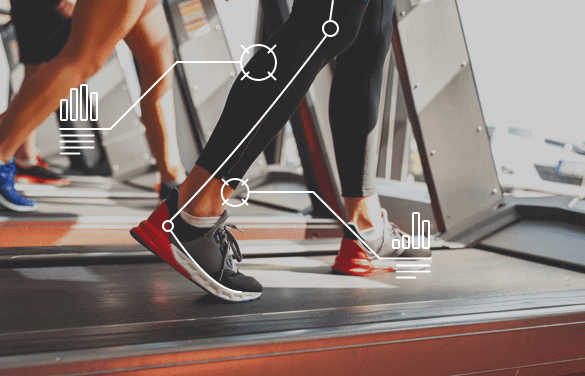
Faulty gait mechanics in the lower extremities is a primary cause of common running injuries like patellofemoral pain syndrome, aka runners’ knee. Technological innovations like virtual reality feedback, surface EMG and instrumented treadmills provide feedback on loading mechanics, muscle activation patterns and hip, knee and ankle kinematics. Advanced technology paired with sophisticated software has revolutionized the way we identify and retrain faulty gait patterns.
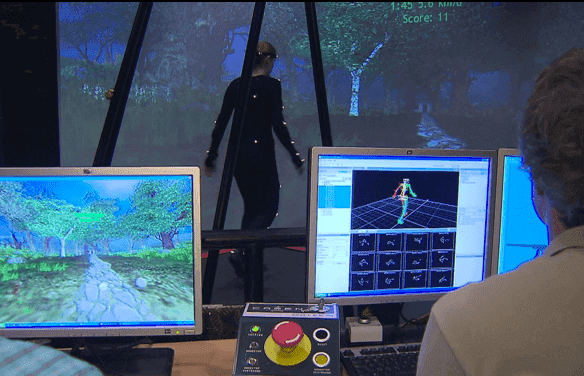
During real-time gait retraining, the runner is able to use spontaneous feedback to make minor mechanical adjustments while running, to establish more efficient gait patterns that eliminate pain and reduce the risk of future injuries. Multiple studies indicate that changes made in gait using real-time biomechanical feedback are well retained, months after the retraining program is completed.
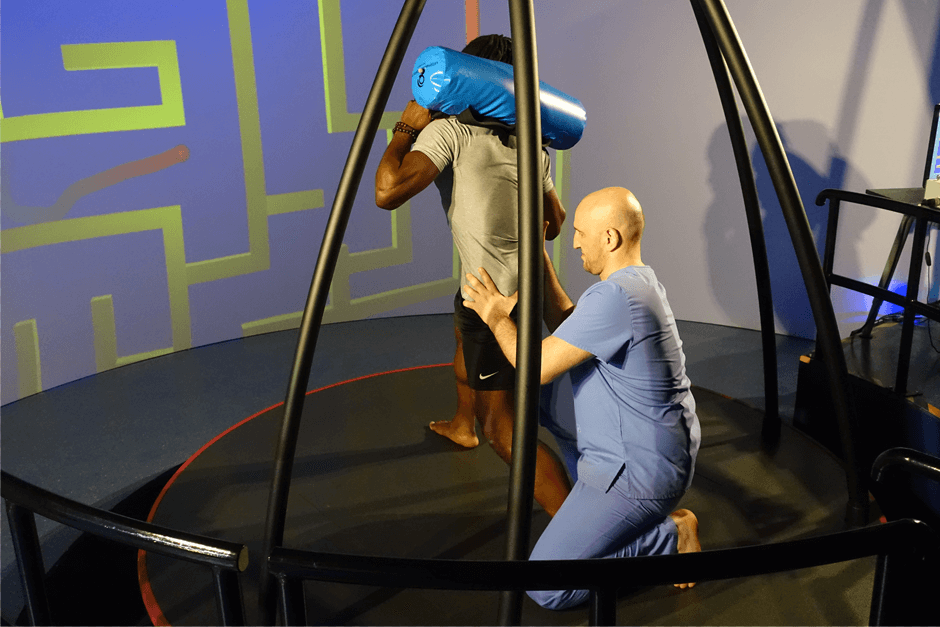
Physical therapy helps injured runners overcome imbalances in muscle strength and joint range of motion that can contribute to poor gait mechanics. PT can be an effective tool for increasing soft tissue and joint mobility, improving foot arch strength and correcting postural issues. However, when it comes to optimizing gait mechanics, physical therapy provides only 50% of the solution.
Motor skills are learned and retained at the cognitive level. Your brain sends messages via the neuromuscular system to dictate which muscles should fire, at what frequency and in which sequence. When a runner is injured or in pain, the brain directs the muscles to fire in ways that shift force loads away from injured tissues and redistribute them to healthy tissues. The resulting compensation patterns often become habitual, overloading healthy structures and setting them up for overuse injuries.
Real-time gait retraining helps the runner to relearn motor skills at the neuromuscular level, reducing harmful force loads on muscles, joints and connective tissues and establishing healthy habits for efficient movement.
Most clinics use one or two cameras to conduct a two-dimensional gait analysis. Our revolutionary 3D gait analysis system uses multiple cameras and reflective markers to accurately measure movement patterns in the hip, pelvis knee and ankles, in 3 dimensions:


Two dimensional gait analysis is unable to measure movement patterns in the transverse plane, which is where most running injuries occur. With 3D analysis, we are able to use collected data to determine the root cause of running injuries, and devise a personalized treatment and retraining program unique to each runner.

Dr.Kalika revolutionized foot and ankle care by using high resolution diagnostic ultrasonography for structural diagnosis, combined with with gait and motion analysis technology. Dr.Kalika’s motion and gait analysis lab is the only private lab in the US that features research-grade technology found only at top research universities, made available to patients in his private clinic.
 Dr. Yuri Brosgol
MD
Dr. Yuri Brosgol
MD
 Dr. Michael Goynatsky
DPT
Dr. Michael Goynatsky
DPT
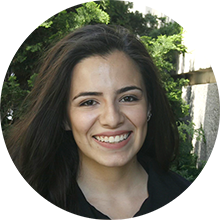 Dr. Daniela Escudero
DPT
Dr. Daniela Escudero
DPT
 Dr. Michelle Agyakwah
DC
Dr. Michelle Agyakwah
DC
 Dr. Tatyana Kapustina
L. Ac.
Dr. Tatyana Kapustina
L. Ac.
The NYDNRehab clinic in Manhattan is the first clinic in NYC to offer 3D gait analysis, and one of a handful of private clinics in the world to feature C.A.R.E.N, our computer assisted rehabilitation environment. By combining quantitative 3D gait kinematics data with virtual reality feedback, we are able to offer state-of-the-art running gait retraining to runners ranging from novice to elite. Visit NYDNRehab for running gait analysis and retraining that revolutionizes the way you run, now and in the future.
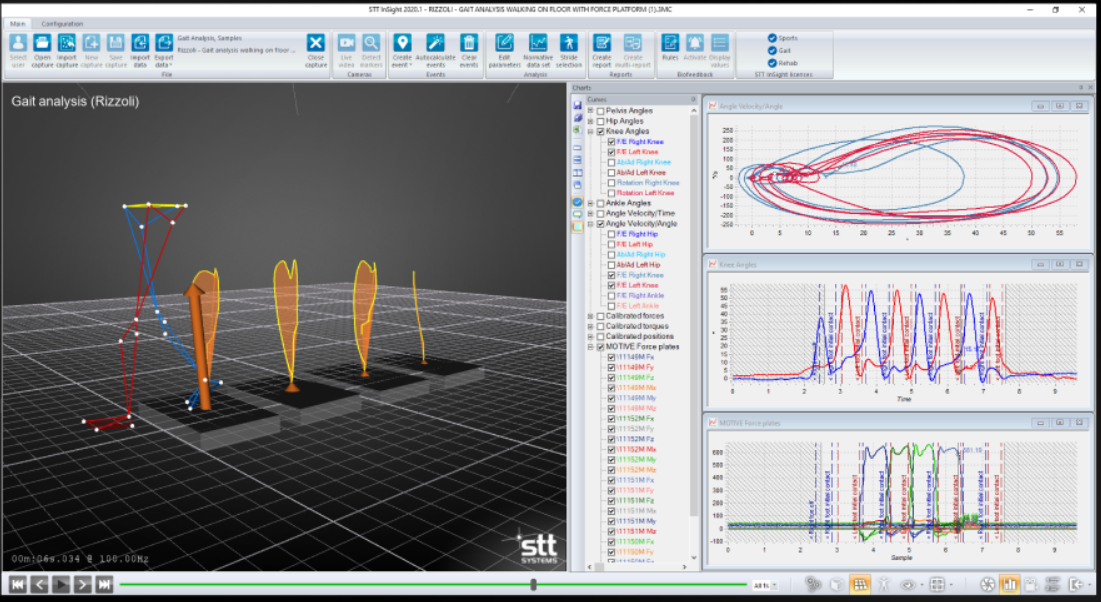
Davis, Irene S., and Erin Futrell. “Gait retraining: altering the fingerprint of gait.” Physical Medicine and Rehabilitation Clinics 27.1 (2016): 339-355.
Noehren, B., J. Scholz, and I. Davis. “The effect of real-time gait retraining on hip kinematics, pain and function in subjects with patellofemoral pain syndrome.” British journal of sports medicine 45.9 (2011): 691-696.